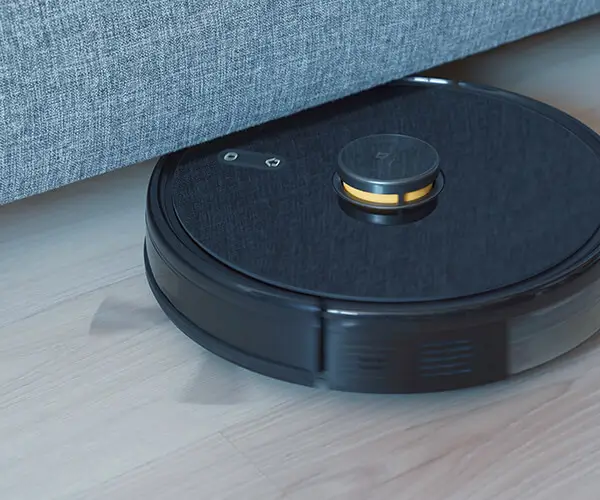Imagine a tiny marvel of engineering that packs immense potential—an Arduino Nano, a microcontroller so compact that it fits comfortably in your palm, yet powerful enough to transform simple ideas into mesmerizing creations. Whenever you see a robotic arm delicately grasping objects, a drone performing aerial maneuvers, or a model car turning smoothly in your garage, chances are, there's an Arduino or similar microcontroller orchestrating the dance of motors and sensors behind the scenes.

One of the fundamental building blocks of many DIY projects involving movements and automation is the servo motor. Think of it as the muscle in your robot—a device designed to precisely control angular position, velocity, and acceleration. Whether you're aiming to control the steering of a miniature car, or craft an articulated robotic hand, servo motors are your best friends.
In this guide, we’ll explore how to bring these servo motors to life using the tiny yet mighty Arduino Nano. If you’ve ever found yourself glued to YouTube tutorials, watching those mesmerizing robotic projects, then this journey into Arduino coding will help you understand the magic behind the scenes. We will cover everything from connecting your servo motor to writing simple yet effective code to make your project move—step by step.
Why Use Arduino Nano for Servo Control?
You might wonder why choose Arduino Nano over other Arduino boards or microcontrollers. Well, Nano's ultra-compact size makes it ideal for projects where space is limited. Its lightweight form-factor allows integration into wearable technology, small robots, or embedded systems without sacrificing performance. Despite its small stature, it boasts enough GPIO pins, a decent clock speed, and compatibility with a vast ecosystem of libraries and community support.
Additionally, Arduino Nano is beginner-friendly. Its simple programming environment leverages the familiar Arduino IDE, making it accessible even for newcomers. The code structure, based on straightforward functions like 'digitalWrite' and 'analogWrite', helps users grasp essential programming concepts while working on real-world applications.
Understanding Servo Motors: The Heart of Movement
Before diving into the coding aspect, it's helpful to understand how servo motors operate. A typical servo includes a DC motor, a gear train, a potentiometer, and a control circuit. When the control signal is sent from the microcontroller (like Arduino Nano), the servo's internal circuitry adjusts the motor's position to reach the desired angle, based on the PWM (Pulse Width Modulation) signal.
Most hobby servos operate within a 4.8V to 6V power range and accept control signals in pulses of 1 to 2 milliseconds in width, repeated every 20 milliseconds. For example, a 1-millisecond pulse might command the servo to turn to 0°, while a 2-millisecond pulse commands it to turn to 180°. The Arduino uses the 'Servo' library to generate these signals easily, abstracting away the complexities.
Setting Up Your Workspace: Hardware Essentials
To start your journey, gather these essential components:
Arduino Nano (any variant) Standard hobby servo motor (e.g., SG90 or MG90S) Breadboard and jumper wires External power supply (if necessary, especially for multiple servos) USB cable for programming and power Optional: potentiometer, switches, LEDs for more interactive projects
Connecting your servo is straightforward: attach the servo's power wire (red) to the 5V pin on the Nano, the ground wire (black or brown) to GND, and the signal wire (orange or yellow) to a digital PWM pin, usually D9 or D3.
Basic Arduino Nano Code for Servo Control
Now, here's the first glimpse into how to control a servo motor using Arduino Nano. We will start with a simple example that makes the servo sweep back and forth, demonstrating the fundamental principles.
#include // Include the Servo library Servo myServo; // create servo object to control a servo void setup() { myServo.attach(9); // attaches the servo on pin 9 } void loop() { for(int pos = 0; pos <= 180; pos += 1) { // go from 0 to 180 degrees myServo.write(pos); // tell servo to go to position in variable 'pos' delay(15); // waits 15ms for the servo to reach the position } for(int pos = 180; pos >= 0; pos -= 1) { // go from 180 to 0 degrees myServo.write(pos); delay(15); } }
This code makes your servo ocillate smoothly from 0° to 180° and back, providing a simple but powerful demonstration of rotation control.
In this snippet, the 'Servo.h' library simplifies the process of generating PWM signals. The 'attach()' method selects the PWM pin connected to the servo's signal wire; in this case, pin 9. The 'write()' method sets the target angle, and 'delay()' ensures the servo has enough time to reach each position.
Troubleshooting Tips
Ensure your servo is powered appropriately, especially if controlling multiple servos simultaneously. Using an external power supply helps prevent 'brownouts' on the Arduino's 5V pin. Double-check your wiring; incorrect connections can damage your servo or cause unpredictable behavior. Use a test sketch like the one above before integrating your servo into more complex projects. Remember that servos have a physical limit, and forcing them beyond 180° or 0° can damage the internal gears.
This wraps up the first part of our deep dive into Arduino Nano and servo motor control. Next, we'll explore more advanced programming techniques, real-world project ideas, and how to refine your code for precision and responsiveness.
Established in 2005, Kpower has been dedicated to a professional compact motion unit manufacturer, headquartered in Dongguan, Guangdong Province, China.




































